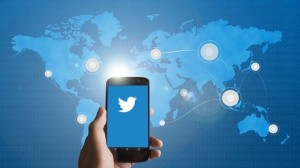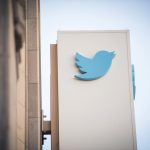2 forms of “pretend” Twitter Followers never to Unfollow
March 17, 2015
 steadily, companies are urged to remove the proportion of Twitter followers which can be determined to be pretend. The common sense is to raise the “price” of the company’s social media following, with a purpose to raise the return on time and/or finances they put money into Twitter social media advertising.
steadily, companies are urged to remove the proportion of Twitter followers which can be determined to be pretend. The common sense is to raise the “price” of the company’s social media following, with a purpose to raise the return on time and/or finances they put money into Twitter social media advertising.
on the other hand, as with any complicated, automated, algorithmic course of, it’s bad to belief in it completely. doing away with pretend followers that a software has identified may do more hurt than just right.
What’s the harm in Having just a few faux Twitter Followers?
To be perfectly frank, there isn’t any. You’d be doing little or no harm to anything else via leaving a few fake customers following your account. (this is quite completely different than shopping for followers, which can harm your brand. How? pretend followers don’t have interaction. Having an enormous “purchased” following, but virtually no engagement, raises suspicions in the eyes of your market.)
Conversely, the one hurt in leaving the few fake users with a view to naturally practice your company’s energetic Twitter account is that your conversion charge will probably decrease… however only quite. truthfully, the low share (~5%) of “faux” customers (bots, spammers, and many others.), that most often follow every active Twitter account aren’t sufficient to water down conversion price calculations to any important degree.
Deleting fake followers in bulk is too unsafe, as you’d indubitably be deleting reputable followers (i.e., attainable prospects, partners, and many others.).
And deleting fake followers in my opinion is just too time-consuming for any profit-targeted company.
and the way may you even comprehend which followers are fake?
“Wait, don’t delete!” ;(
the actual drawback with “pretend” Followers
There are several automatic on-line tools, like those through Social Bakers and manage Flitter, that purport to research the authenticity of your organization’s Twitter following and report the selection of faux followers. the issue with using tools like these is the accepted mislabeling of real accounts as “fakes.”
some of the causes these tools brand Twitter accounts as fake can embody:
- Account hasn’t switched from the default Twitter “egg” avatar
- Account hasn’t tweeted in a while (or ever)
- Account follows many extra individuals than follow it
- Account has few or no followers
- and so on.
then again, just by way of reading the record, I’m sure that you could already see how this may simply result in reporting of false fakes. Having full belief in instruments like these would be an unbelievable option to sabotage your agency’s advertising and marketing.
the 2 sorts of “faux” Twitter Followers never to Unfollow
type 1: The local consumer.
should you goal locals, a handy guide a rough guide flick through your follower list will likely disclose many dormant profiles that had “little bursts” of action when the Twitter account was created.
These debts aren’t fake.
This lack of job continuously happens on money owed run by means of small local companies that try/tried to manage social media advertising in-house, but don’t/didn’t have the personnel, time, knowledge, and many others.
typically, a company rep excitedly sets up a Twitter account, sends a few tweets promotion a new web page or upcoming adventure, then gets bored, at a loss for words, annoyed by using lack of engagement, or just now not has any clue what to tweet about… and all of a sudden stops posting.
Unfollower tools often erroneously mark these debts as fake.
kind 2: The shy man. Or gal.
As in the actual world, we know that the vast majority of individuals on social media are just listening. They discuss with Twitter to look what “the sector” has to say about issues they care about, and they either choose to permit the “Chatty Cathys,” Verbose Victors, and Loud Lionels to make utter fools of themselves on their very own, thanks, or they just have no desire to actively have interaction.
It’s a mistake to delete these individuals too. a scarcity of activity does now not a fake follower make.
the issue? since no tool can inform when a Twitter consumer closing logged in—now not even Twitter itself—“job” can best be measured by way of a consumer tweeting, favoriting, replying, or taking some action on the community.
So unfollower tools also, incessantly, mark these users as faux.
either of these two Twitter follower types could also be hanging onto your each word. They may also come onto Twitter *just* to look what your company is saying and doing this week. Or every day. Or twice day-to-day.
however how would you realize?
That’s proper; you wouldn’t.
in step with the WSJ, handiest thirteen% of current Twitter money owed have written as a minimum 100 tweets. just 30% of debts have despatched even 1-10 tweets, and a substantial 44% of Twitter money owed have never despatched a tweet at all. So calm that itchy clicky finger (or tappy finger, in case you’re on mobile) and rethink the deletion of your organization’s exhausting-earned Twitter followers.
The reveal
identical to at events, and even at networking occasions, there are wallflowers. There are also people who attempt to engage, however are just too darned uncomfortable, unwilling, or just undesirous.
educate your organization to love each single a type of quiet types simply as a lot as you delight in the brazen and vivacious sorts. Why? because they’ve chosen to practice YOUR organization for whatever the cause.
Don’t let an unskilled social media manager injury possible business relationships by means of unfollowing “fake” followers with abandon. In doing so, it’s good to ostracize (and even offend) doable connections and enthusiasts who simply could also be awaiting the suitable possibility to speak up (or share your put up, or tell a pal about you)… and who really worth your words.
Digital & Social Articles on trade 2 community
(144)













